OVERVIEW
There are many different ways into the games industry, from talking to people personally and getting a referral to taking a chance with recruiters or open applications. In this article we are going to go through all of that and more to help you nail your applications for the games industry.
DIFFERENT APPLICATION TYPES
There are multiple ways of applying for the games industry, from online applications to reaching out to recruiters. But what id the difference in these approaches?
This little section highlights the differences and what makes them stand apart.
- 📍 ONLINE APPLICATIONS These applications can usually be found on company career pages or aggregator sites (like Artstation Jobs) and are usually a direct link between you trying to get a job and the company looking to fill a position.
- 📍 EMAIL APPLICATIONS If the company doesn’t have a career portal page then the fallback would be to send an email directly to the company. This seems to be the less used option these days though, mostly reserved for really small companies.
- 📍 RECRUITERS
Another route of applying is to talking to recruiters, or them talking to you. There are two types of recruiters. Internal that are working directly for the company that is trying to fill a position, External are recruiters working for a recruiter company with a studio as their client, and they usually get paid based on a percentage of your wage if you stay at the studio they hired you for.
Recruiters are really active on LinkedIn, where you can put yourself to “Open for work” and if you have a portfolio link with solid work they might reach out to you. But you can also reach out to them as well. - 📍 OPEN APPLICATIONS Open applications are done in situations where you want to work for a company but they don’t have a current offering for the position you’re trying to fill.
In this case some studios will have a option to still apply for an “Open” application, which means that you will just apply for a potential future position. - 📍REFERRAL
If you know people that already work in companies and have a good relationship with those people, you can always talk to them and see if the company might have a position open.
All of these have different approaches and how you go about them, but more on that on the coming sections.
READING AN APPLICATION
So let’s take a deeper look into what a typical application might look like and what information it might contain.
- 📍 JOB PURPOSE Here you will find all the descriptions for what is expected from you on the job, your daily responsibilities and tasks. This is good to benchmark what you need to get this role and if you want to do this role yourself. Environment artist might mean something more specific to the studio you are applying for.
- 📍 EXPERIENCE NEEDED This is where most people trip up and hesitate if they even should apply to it, thinks like "1 year of experience" or "X amount of shipped titles" can really stop people in their tracks when applying for a job. But if your work is solid, then don't be taken back by this, just go for it, you already have a "No" you can get a "Yes"
- 📍 SALARY This is more and more common these days that salaries are open on the application (or at least salary brackets) which can be good to know before even applying.
- 📍 SOFTWARES USED I think once you have a preferred set of programs you would like to use that’s something you will be looking for. However, to oppose that, switching a program is also not the most difficult thing to do for a job either.
- 📍 HINTS AT THE PROJECT Try to understand the project it might be for, why? This gives you a better understanding of what you will be doing when working for this company, as well as keep you motivated to work on it. Some companies do put this in their description if it’s already announced, or may even discuss it during the interviews under the protection of an NDA.
- 📍 CONTRACT TYPE Important distinction between the two, a contract is working for a limited amount of time where a permanent contract is a position with indefinite length. Not having to worry about your position you might be joining, is nice!
- 📍 QUALIFICATIONS These are the skills they want to check off, this will be a balance between soft and hard skills. This section is probably the most important, to know if you qualify for the job itself. But to contradict myself here is that you should still need to give it a try, even if you don’t check all the boxes yet or think you are not a great fit. Let the studio decide on that, we can be our own worst enemy.
- 📍 REMOTE OR IN HOUSE Do you have a deep connection to your local community, then it might be time to look for a remote job which you can just do from your current position.
- 📍 RELOCATION ASSISTANCE Placeholder
- 📍 BENEFITS These can include things from daily fruits to stock options, help with apartment hunting, bike to work schemes and free local transport just to name a few
Additional information
This is more nice to know information and can help you get a better grip on the logistics should you get through the application process, things like relocation assistance etc... are all added here
Check out our podcast that we did on this subject here:
Applying for the job
Making sure you've got everything
Before applying, let's make sure that you have everything you need to get applying.
This means that you will need the following:
- CV (Placeholder)
- PORTFOLIO LINK (Artstation profile, not Artstation Website)
- COVER LETTER (Placeholder)
- WORK SAMPLES (Some companies ask for you to put images on their application form)
Now that you've got all that, let's get to it!
Make it easy to read
Most applications these days are online and provide you with a clear form on where you can add all the things you need and will give you a more objective view in the whole hiring process. Sometimes you can even follow along with the process yourself and see what stage it is at.
But in the case when it comes down to emails, you have to make sure of one main thing, keep it short and simple to read, get the crucial information across and then send it over.
📍Check out our section on EMAIL CONVERSATIONS
In most cases this means a short introduction (Name, Role, background) then jumping to the body (Starting with a personal touch, transitioning to your work and portfolio link) before ending the email thanking them for their time and signing off with your name, role and link.
It all sounds pretty boring right? And to be honest, this is also not a guaranteed approach because it all depends on the person on the other side and what they are looking for. The reason why we intentionally make these a little formulaic is because it's more likely that people don't have a bad reaction to your application in that case.
Where as if you go all out and showcase a lot of personality, it first has to be done in a tasteful way (which sounds harder than it is, trust me) and then it needs to land with a person who is interested/impressed by it.
Doesn't mean it can't work, but your target audience is a little more specific. BUT this can also be done by design to great effect too.
Like an example from one of our workshops with NINA KLOS. So check out the amazing tips she shared here on going the personal route:
Apply to every job that you can find
Never just wait on that one company to get back to you no matter how much you want to work there, you never really know if and when they will get back to you (if they get back to you at all) so keep applying to other companies when waiting for that company to get back to you.
What I can recommend is making a list of all the companies you've apply to, how you applied for them and when you did so
To make this process easy I personally use "NOTION" which allows you to create a database like this one right here. I then add all the things I want to keep track off like "When did I apply?" "When was this added?" "The Type of application", etc...

Then to streamline I use a little application called "Save to notion" in my browser which let's me populate the field that I've created in notion.

This really speeds up me keeping track of things, and this can be customised to your personal liking.
APPLICATION FOLLOW UP
How long should I wait?
Most of the time a company will give you a timeline on when they will follow up, which usually ends up being 1 or 2 weeks on average. If you didn't receive anything like this then send them a friendly reminder in a week to ask them if they have an update on it.
With online applications, there is unfortunately nothing much you can do to speed up the progress, since you don't have a direct contact email with them at all. So just apply, add them in your little database and keep on applying.
(You can see where this tracking method becomes really useful already)
No reply from them?
If you haven’t heard from the studio in a while (let’s say one to two weeks) you can always send them another email to follow up yourself.
A good way of doing this is sending one email and then if they don't reply, send another one between a week and two weeks. This makes sure that they have had ample time to reply already and is not going to make you feel pushy.
A bit of patience can sometimes help a lot, even when you want a reply way quicker. If they still don't reply, just assume that you've been ghosted (ignored by the company for whatever reason) and move on.
The person who's persistent wins! So keep up the fight and keep applying.






















